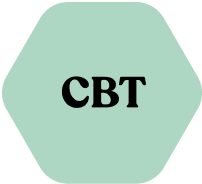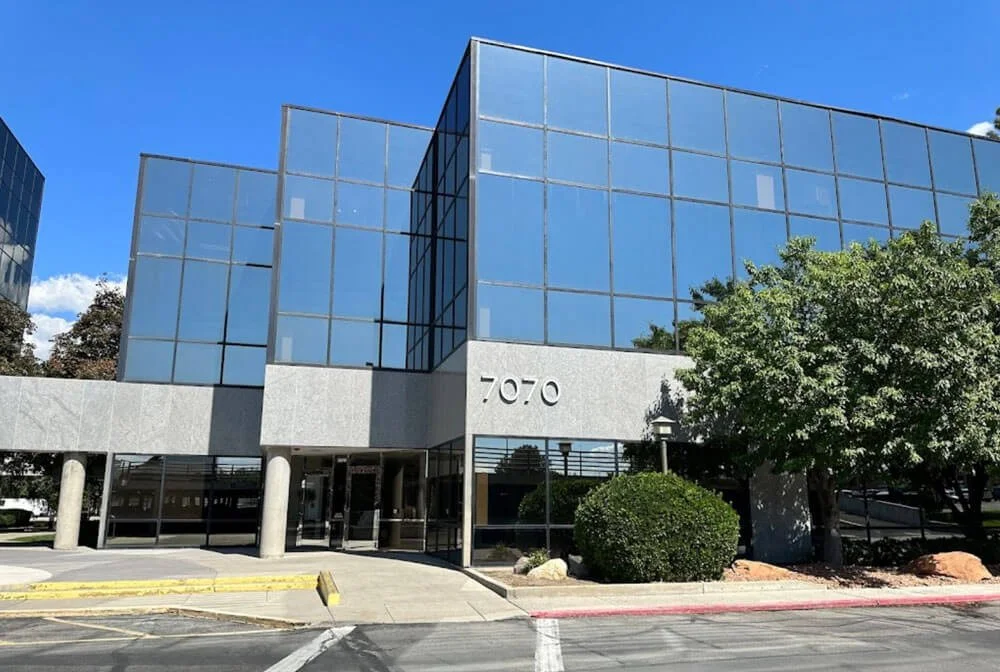
Types of Therapy
Accelerated Resolution Therapy
A unique, evidenced-based form of therapy designed to help you process and resolve difficult emotions or traumatic memories quickly and effectively. ART uses guided imagery and specific eye movements to help your brain reframe distressing experiences in a way that reduces their emotional impact.
ART is most often used to treat trauma and PTSD, anxiety and panic disorders, depression, phobias, and grief and loss – it is particularly helpful for people who feel “Stuck” in certain memories.
Benefits:
Fast results: many clients experience noticeable relief in just 1-5 sessions
Non-invasive: you don’t have to talk in detail about your trauma or difficult experiences, if you’re not comfortable
Reduced Emotional Impact: ART helps reframe memories so they feel less painful, without erasing them
Empowering: you are in control of the process, guided by your therapist
Cognitive Behavioral Therapy
A common type of talk therapy. This type of talk therapy is also called psychotherapy. During CBT, you work with a mental health professional such as a psychologist or other licensed therapist in a structured way. You attend a limited number of sessions. CBT helps you become aware of thinking patterns that may be creating issues in your life. Looking at the relationship between your thoughts, feelings and behaviors helps you view challenging situations more clearly and respond to them in a more effective way.
CBT can be a very helpful tool in treating many mental health conditions, such as depression, anxiety, post-traumatic stress disorder, also called PTSD, or an eating disorder. Sometimes CBT is the only treatment needed. Other times it's used along with other therapies or treatments such as medicines.
You don't need to have a mental health condition to benefit from CBT. CBT can be an effective way to learn how to better manage stressful life situations.
Dialectical Behavior Therapy
Dialectical behavior therapy (DBT) is a type of talk therapy for people who experience emotions very intensely. It’s a common therapy for people with borderline personality disorder, but therapists provide it for other mental health conditions as well.
Eye Movement Desensitization and Reprocessing
A structured therapy that encourages the patient to briefly focus on the trauma memory while simultaneously experiencing bilateral stimulation (typically eye movements), which is associated with a reduction in the vividness and emotion associated with the trauma memories.
Exposure and Response Prevention
The exposure component of ERP refers to practicing confronting the thoughts, images, objects, and situations that make you anxious and/or provoke your obsessions. The response prevention part of ERP refers to making a choice not to do a compulsive behavior once the anxiety or obsessions have been “triggered.” All of this is done under the guidance of a therapist at the beginning — though you will eventually learn to do your own ERP exercises to help manage your symptoms. Over time, the treatment will “retrain your brain” to no longer see the object of the obsession as a threat.
Mindfulness-Based Therapy
Mindfulness-based cognitive therapy, MBCT, is a modified form of cognitive therapy that incorporates mindfulness practices that include present moment awareness, meditation, and breathing exercises. This therapy was formulated to address depression. Using these tools, the mindfulness-based therapist teaches a client to be in the here and now as well as break away from negative thought patterns that can cause a decline into a mood-disordered state; this therapy can help a person fight off a difficult frame of mind before it takes hold.
MBCT is derived from the work of Jon Kabat-Zinn, a professor of medicine and creator of the mindfulness-based stress reduction technique, which is often used in meditation and yoga practices. Psychologists Philip Barnard and John Teasdale contributed to this work; and later, Teasdale along with psychologists Zindel Segal and Mark Williams combined this stress reduction strategy with cognitive behavioral therapy.
Play Therapy
Play therapy seeks to balance the symbolic play with the linguistic expression, in a way appropriate to the children age and beneficial for them (9). Play therapy is widely used to treat emotional problems and behavioral disorders of children because it fully meets their unique developmental needs.
Solution-Focused Brief Therapy
Solution-Focused Brief Therapy (SFBT) is a short-term goal-focused evidence-based therapeutic approach, which incorporates positive psychology principles and practices, and which helps clients change by constructing solutions rather than focusing on problems. In the most basic sense, SFBT is a hope friendly, positive emotion eliciting, future-oriented vehicle for formulating, motivating, achieving, and sustaining desired behavioral change.
Get in touch.
Not sure which type of therapy is the right fit for you? Give us a call or send us a text and we’ll help you explore your options.
Call or Text: (385) 449-2599









